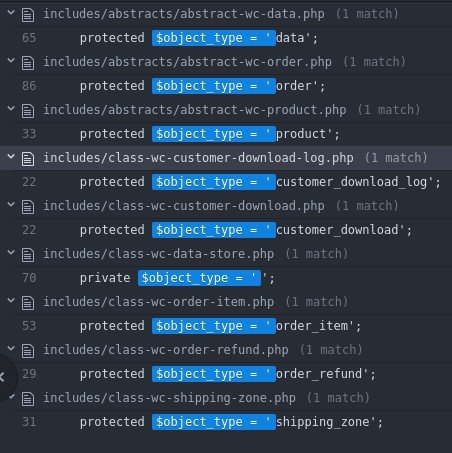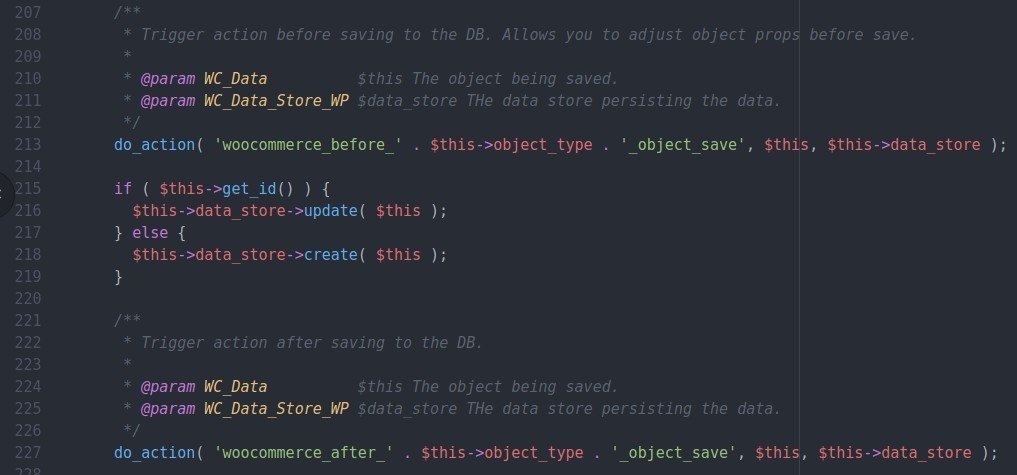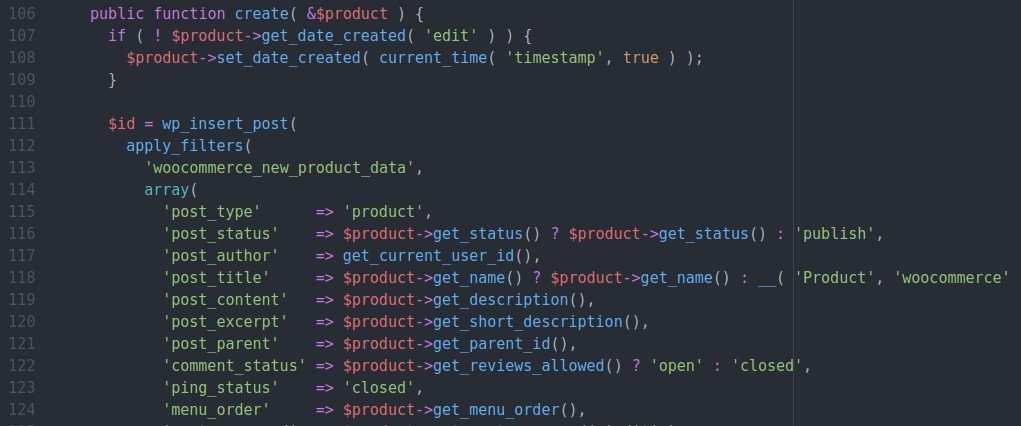WC_Data Filters and Actions
Overview
The inheritance pattern used by the WC_Data families enables a standard pattern for the action and filter hooks available to developers making it easy to quickly modify behavior across WooCommerce. Once you’re aware of the standard hooks that you can expect to be available to you, you can skip the process of searching through the documentation and codebase, Unless you like spending hours with search engines, Stack Exchange, and IDE searches and insert your custom code using the standard patterns.
Let’s take a look at what that entails…….
Data Object Hook Prefixes

- Each WC_Data object has a hook prefix, used for it’s specific ‘getter’ method filters
- The hook prefix is accessed by the get_hook_prefix() protected method
- By convention the hook prefix is equal to “woocommerce_{$object_type}_get”
Contexts and hooks
- Throughout the WC_Data class get and set methods, an optional $context variable can be passed
- $context is used to determine if specific filters should be applied.
- In the case of getters the default value, ‘view’, applies the filter. While the alternate value ‘edit’ returns raw data. The ‘edit’ context is typically used for fields in the WP Admin dashboard
- In the case of setters, the default value is usually ‘set’, with no specific functionality assigned to that value…yet. I’m not sure what the plans are for this in the long run–but will update if I find anything out ¯\_(ツ)_/¯

Pre and Post DB save actions
WooCommerce also provides action hooks before and after a database save, with access to the object$this, and it’s data store$this->data_store

Family specific hooks and filters
- Beyond the standard WC_Data implemented actions and filters, each family also implements its own series of hooks and filters
- These are all covered in the docs covering all of these would be excessive however there are some patterns we can observe:
Boolean filters
- Each boolean method (e.g. is_purchasable()) is typically passed through a filter

Getter filters
- Each getter method eventually calls either the get_prop or get_meta method, each of which is passed through a filter. … as long as the ‘view’ context is used

Create filters
- Default values are typically passed through a filter before a new data object is created This is found in the data store create method.

Actions in WC_Data
- Action hooks are spread more unevenly than filters, but generally they are most frequently seen in objects directly involved in the checkout processsuch as the Order and Order_Item Families

Conclusion
This concludes our outline of the WC_Data approach to action and filter hooks. You should now be able to confidently navigate to filters and actions that will allow you to extensively customize the behavior of WooCommerce, without breaking into “heavy coding”
In the next section, we’ll look at another method to achieve even further customization in WooCommerce through a more robust method: extending the WC_Data classes
But let make sure you’ve got the core concepts down first.
Knowledge Check
Quiz Summary
0 of 3 Questions completed
Questions:
Information
You have already completed the quiz before. Hence you can not start it again.
Quiz is loading…
You must sign in or sign up to start the quiz.
You must first complete the following:
Results
Results
0 of 3 Questions answered correctly
Your time:
Time has elapsed
You have reached 0 of 0 point(s), (0)
Earned Point(s): 0 of 0, (0)
0 Essay(s) Pending (Possible Point(s): 0)
Categories
- Not categorized 0%
- 1
- 2
- 3
- Current
- Review
- Answered
- Correct
- Incorrect
-
Question 1 of 3
1. Question
What is the purpose of WC_Data’s get_hook_prefix()?
CorrectIncorrect -
Question 2 of 3
2. Question
(T/F) All Booleans methods for WC_Data objects are unfiltered
CorrectIncorrect -
Question 3 of 3
3. Question
Where’s all (most of) the action at?
CorrectIncorrect
Keyboard shortcuts
Down arrow Next slide
Up arrow Previous slide
Color codes
Hover over text more additional info